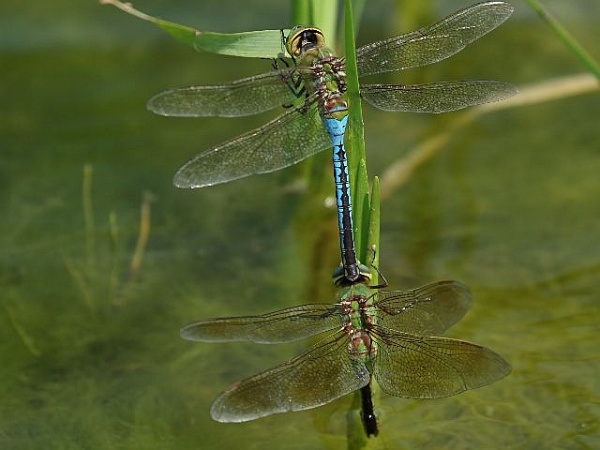
10 September 2008
Back in 1990 no one knew if dragonflies migrated but they thought it might be true.
Every fall people noticed dragonflies flying the same flight paths on the same prime migration days as the birds. They even saw them traveling west along the Gulf coast from Florida to Louisiana. Were they going around the Gulf? Were they migrating south?
In 1992 a group of scientists initiated what became the Migratory Dragonfly Partnership and asked observers to record dragonflies moving along the coasts and at hawk watches. Their hunch was correct. Twenty-five to fifty of the world’s 5,200 species of dragonflies do indeed migrate, and we’re still learning about where they go. Common green darners (pictured mating by Chuck Tague) are one of them.
Just as with monarch butterflies the individual common green darner who flies south is not the one who makes the return journey. In the spring that individual flies a short distance north, mates, lays eggs and dies. Her offspring emerge and fly further north repeating the process. Eventually the insects reach the northern limit of their range, the season changes and their descendants head south.
I always see dragonflies at hawk watches. They’re the fighter jets of the bug world, very quick and highly maneuverable. When flying ants plague us (what is it with flying ants at hawk watches?) the dragonflies make mincemeat of the ant swarms. My favorite insect moment was when, through binoculars, I saw a dragonfly zoom in and chomp a flying ant in mid air. Good show! On the other hand I’ve seen American kestrels snatch dragonflies from the sky and eat them in flight – a sort of snack “to go.”
Such are the perils of migration.
(photo by Chuck Tague)